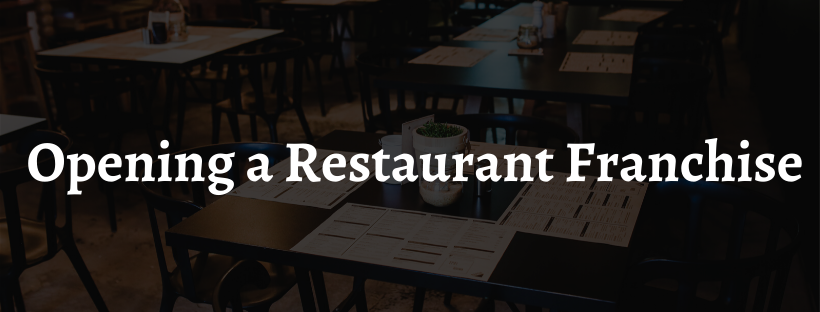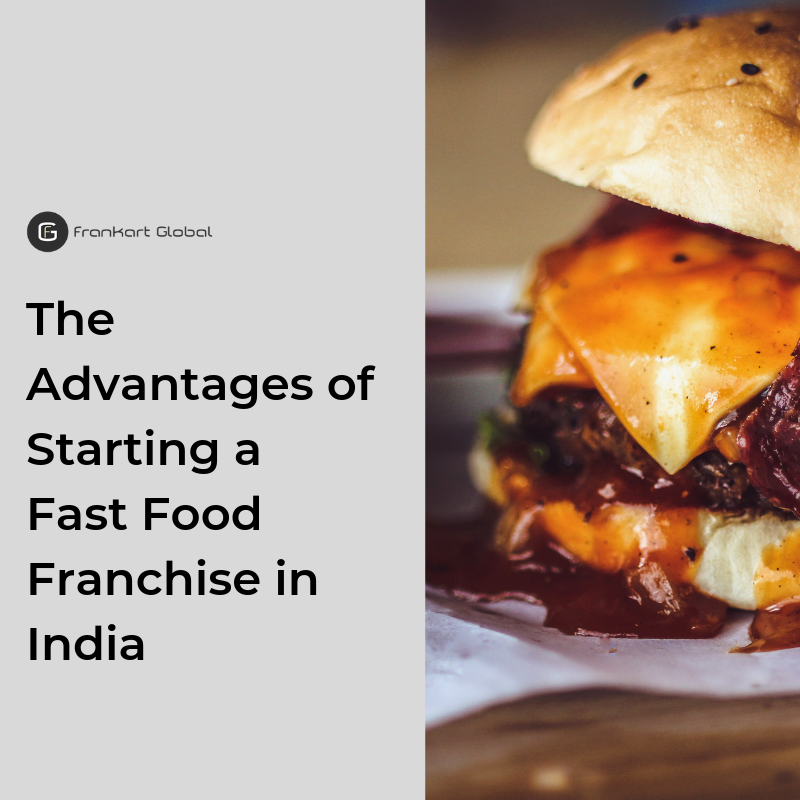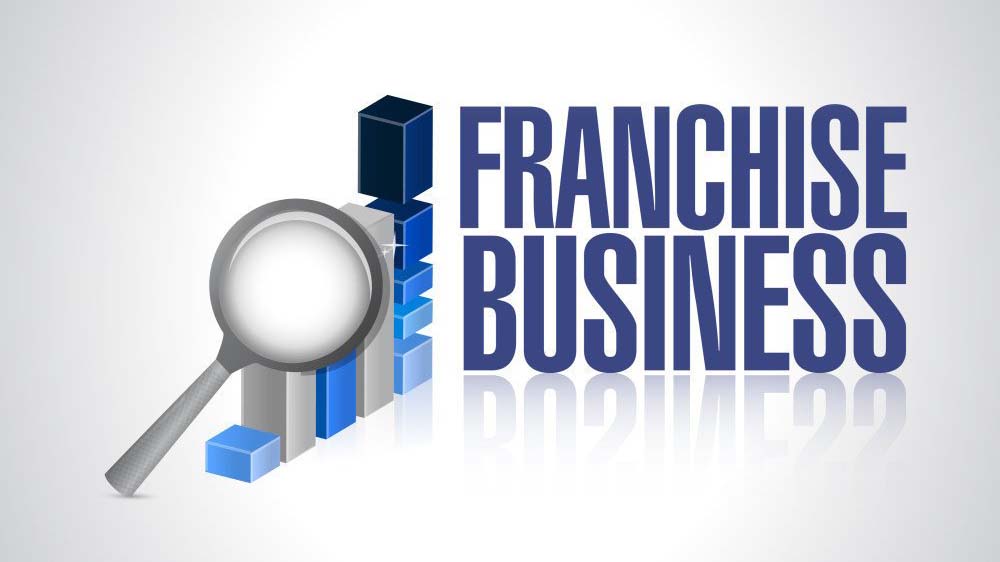

Opening a Restaurant Franchise
Who doesn’t love food? And what could be better than turning your love for food into your work, right? But beginning a food joint is one thing. Creating a brand that customers inevitably end up visiting regularly is a whole different ball game. That is where Restaurant Franchise come in.
The Restaurant Franchise business model has evolved over the past few years in India and turned out to be an extremely profitable venture. Deemed as a low-risk, high-profit business plan, it is a business strategy now followed across the globe with exceptional results and high RoI (Return on Investment). The biggest brands in the market (McDonald’s, Subway, etc.) follow this format and have gained international success.
But that is a global concept. Before going any further, a burning question needs to be addressed. First and foremost, is the food franchise a profitable option in India? Well, here’s a story, and food for thought.
Ravi Jaipuria, chairman of RJ Corp, is the 53rd richest man in India. At the time this sentence was being written, Forbes estimated his net worth at a whopping USD 2.73 Billion. For perspective, that is close to Twenty Thousand. Crore. And this wealth has been amassed via franchises like Pepsi, Costa Coffee, KFC, Pizza Hut, Taco Bell, and Vango.
The Indian franchising industry is roughly estimated at USD 30 billion and is expected to touch USD 50 billion by 2022.
If you plan on venturing into the great Indian food industry, franchising could be your best bet to start with. The repute of a brand name, a tried and tested business module, prime quality products, fully equipped operations training are just a few of the benefits of franchises. Let us break down the complete process of franchising, and delve deeper into this billion-dollar ballgame.
Before we start, three key terms to keep in mind —
- Franchisee: An individual/group who buy(s) the right to run an already-established business model. By buying a franchise, the franchisee gains access to sell the product and/or services of the business.
- Franchisor: The business that allows a franchisee to start a new unit or setup by giving access to its business process and charges franchise fee from the franchisee in return.
- Franchise Fee: The initial payment that a franchisee pays upon signing an agreement. Apart from that, a franchisee is obligated to pay other recurring fees such as advertising fees, royalty and renewal fees
How do franchise businesses work?
Different brands follow different franchise models, but the core concept is similar, i.e. –
The franchisee explores different franchise opportunities and picks the one most suitable for them. Once the prospective franchisor is decided upon, the franchisee can enquire and decide whether they have the necessary resources and knowledge to start the business. If all conditions are met, both parties go ahead and sign the franchise agreement.
Essentially, the franchisor gives a franchisee the right to operate as an extension of the brand. This means the franchisee receives the legal rights to sell the products and services of the franchisor. It also gets the right to use the trademark and follow the same operating methods as the franchisor while functioning under its brand name. The franchisor provides the franchisee with ample support to run the outlet smoothly but it does not have any role in the day to day activities of the franchise.
For example, while the franchisor may help to train the staff or select their uniforms as per brand norms, it cannot be extensively involved in personnel management. Since this is a contractual relationship, both parties have to stick to the standard operating procedures and other terms mentioned in the franchise agreement.
Types of food franchise models
Franchise models can be broadly categorized into three parts.
-
Business Format
:max_bytes(150000):strip_icc()/GettyImages-907736222-5bd818fa46e0fb0051685a1b.jpg)
This is a typical franchise model, in which the franchisor gives the rights to brand name and trademarks to the franchise owner. It is based on a binding contract and a set of guidelines between the two parties. Most popular brands of the F&B industry follow this format, like Starbucks, Subway, and Kathi Junction. The business format branches out in various forms –
- Single-Unit Franchising: Also called direct franchising, this is the most popular format of franchising in India. The concept here is a mix between owner and manager. i.e., Apart from owning the outlet, the franchisee also features as the primary operator/manager. Most brands offering franchises prefer this method due to its efficiency.
- Multi-Unit Franchising: A format where the franchisee takes control over more than one franchise outlet from the franchisor/previous owner. Along with ownership, the job of growing the business for all these units then falls upon the franchisee. A popular example of Restaurant Franchise this format is the world’s largest franchise chain, Subway.
- Company-Owned Franchising: The parent company establishes its own representative office in and assists the franchisee with business set up and operations. A dedicated team is assigned to all franchise outlets and both parties work together to maintain the bar.
-
Product Distribution
This is more like a supplier-distributor relationship. The franchisor provides the product, and the franchise owner or distributor is responsible for moving the product. This business format gives the franchise owner more freedom than the business format. This format is preferred by relatively bigger brands, both in terms of reach or product size. For example, both Ford Motors and The Coca-Cola Company use this kind of franchise.
-
Management

In this method, a franchise owner simply oversees the business in a management franchise rather than being actively involved in day-to-day activities. This salient feature makes this format ideal for someone who has previous business experience. B2B companies usually prefer this format.
How much does a food franchise cost?
As is the case with the models, franchise outlets also differ from each other, and that determines the cost of setting up a food franchise. Let us take a look at the different types of food outlets—
- Kiosk/Truck/Small Outlet: Typically located on the street side and food courts in malls, these are ideal for franchise beginners, wishing to start small and get a hang of the business before jumping in big time. Small outlets like these require comparatively small investments, ranging from INR 5 to 20 Lacs. The average break-even period in this format is also the least, i.e. six months to two years.
- Parlour/Small shop: Ideally located in a market or near a populated area, these medium-sized outlets have a great shot at being your permanent business. In addition to being a steady business, a parlour is also a proficient crowd-puller, which mean better revenue for you. This format is best suited for franchisors who have a significant investment amount, somewhere between INR 15 to 35 Lacs, with an expected break-even time between two to three years.
- QSR/Café/Casual Dining: Arguably the hottest cake in the whole food business, a Quick Service Restaurant (QSR) is the most popular type of franchise outlet. Offering both options, to instantly take-away service or sitting down for a quick bite, QSR or casual dining restaurants require an investment of INR 35-50 Lacs, and the average break-even period is between three to five years. However, the highest sales and profits are recorded in this format itself.
- Bar/Lounge/Fine-Dine Restaurant: Requiring significantly higher investment than any other type, a fully-fledged bar, lounge or fine dining restaurant comes with enviable patronage and recurring customer base, in addition to new crowds on a regular basis. Investment required starts from INR 50 Lacs and can go up to 1 Crore, even higher. The business breaks even in a period of 5-6 years.
Other charges like royalty fees are also pretty common. The exact amount varies from company to company, starting at 4% and going as high as 30%.
Starting a new food business vs. franchising
While franchising might seem like a simple way to go into their own business, simply the backing of an established brand is no guarantee of success. The golden quartet – decision-making, hard work, time management, and customer satisfaction – of running a business come into play here as well. You can weigh the pros and cons of both buying a franchise and owning your own business and then decide for yourself. On one hand, we have franchising –
Pros of buying a Restaurant Franchise
- The free reign of small business ownership along with the perks of a big business network.
- No previous experience needed. Franchisors provide the necessary training to run their business model.
- Franchising has a proven higher rate of success than businesses.
- Franchises are more likely to secure financing.
- Less expensive than starting your own business.
- Ride on a pre-established reputation, proven management, and work practices.
- Avail big-scale advertising, totally free of cost.
Cons of buying a franchise
- A formal agreement with the franchisor dictates how to run the business.
- Little or no scope for imagination or creativity.
- Restriction on locations, products, and suppliers to use.
- The image might be affected by bad examples put up by other outlets.
- Profits have to be shared with the franchisor.
On the other hand, owning your own business comes with its own set of comparisons.
Pros of owning your own business
- Financial Rewards: Say no to shared dividends. Reap bigger profits.
- Independent Lifestyle: Create your own schedule. Lead a flexible life.
- Personal Growth: Grow beyond a particular skill set and imbibe leadership skills.
Cons of owning your own business
- Financial Risk: The biggest risk of owning a business.
- Health Issues: high levels of stress as well as health issues
- Time Commitment: Flexible? Yes. Free all the time? Hell no.
Considering the aforementioned factors, the decision to invest in a franchise or your own business is totally yours to undertake. However, you can ask yourself these questions in retrospection. Try answering them along the lines of ‘Definitely Yes’, ‘Probably Yes’, ‘Probably No’ or ‘Definitely No’.
- Are you willing to take a huge financial risk?
- Are you patient enough to wait for visible profit?
- Are you a risk-taker?
- Are you willing to go that extra mile?
- Are you a good marketer?
- Are you sure you can build something from scratch?
If all your answers are ‘Definitely Yes’, then you can think of setting up a food business of your own. But if they revolve more around any of the others, it would be a wise choice to take up a Restaurant Franchise.
How to get a food franchise?
The most important thing to do before finalising on a model or brand is to give every aspect a thorough background check. Choose through your options carefully, weigh their pros and cons, and have a detailed look at their statistics and market performance. Also, analyse your budget, your expected return on investment, and the time it will take to break even. Visit franchise outlets, and ask around. Talk to fellow franchisees/restaurateurs. Once you know everything inside and out, you can start putting your plan into action.
There are two ways in which you can acquire a franchise. One is to contact the brand directly, and the other is by finding listings on franchise consultant websites. It is generally recommended to have a consultant assist you during the process, especially if it is your first venture. As trained professionals, consultants can assist you in contacting various franchisors, creating and implementing a business strategy, scoping out areas or investments and assistance with legal technicalities.
Franchising into the food and beverage industry of India can turn out to be a proverbial pot of gold for you. But at the same time, it is not a bed of roses. If you think you are ready for it, go for it. All the best! To know more about Restaurant Franchise opportunities in India, please get in touch with us.



